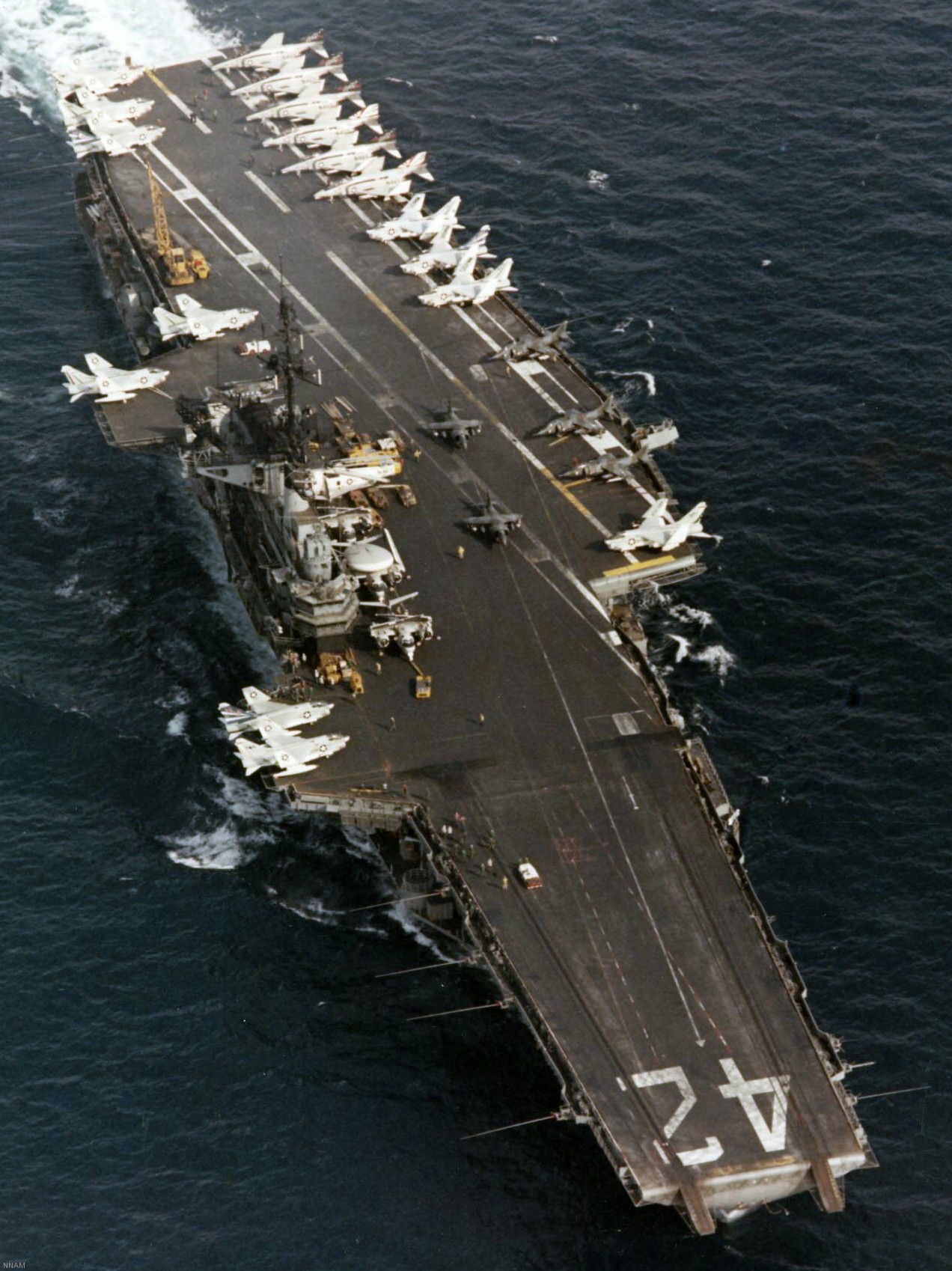That’s a deck launch arrow.
As shown above with the Harriers and prior to the 1990s, certain aircraft were permitted to deck launch under their own power, under certain weight and loadout restrictions, without using a catapult assisted takeoff. Deck launches were very common from the beginning of naval aviation through about the Korean War, but began to fall out of favor with the advent of jet aircraft and their higher stall and takeoff speeds. They also interfered with the flow of traffic on the deck on the larger carriers equipped with an angled landing area.
The deck launch arrow typically starts midship at the LA centerline (near the Jet Blast Deflector for the #3 waist catapult on the larger ships) and runs all the way to the bow of the ship. Depending on loadout a pilot would simply begin their takeoff roll there, under their own power and off the bow of the ship, similar to the launch procedures on the Russian Kuznetsov-class STOBAR carriers. The US Navy finally eliminated the procedure aboard its CATOBAR carriers 30 or so years ago.


